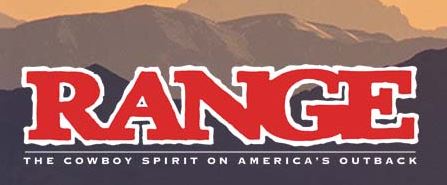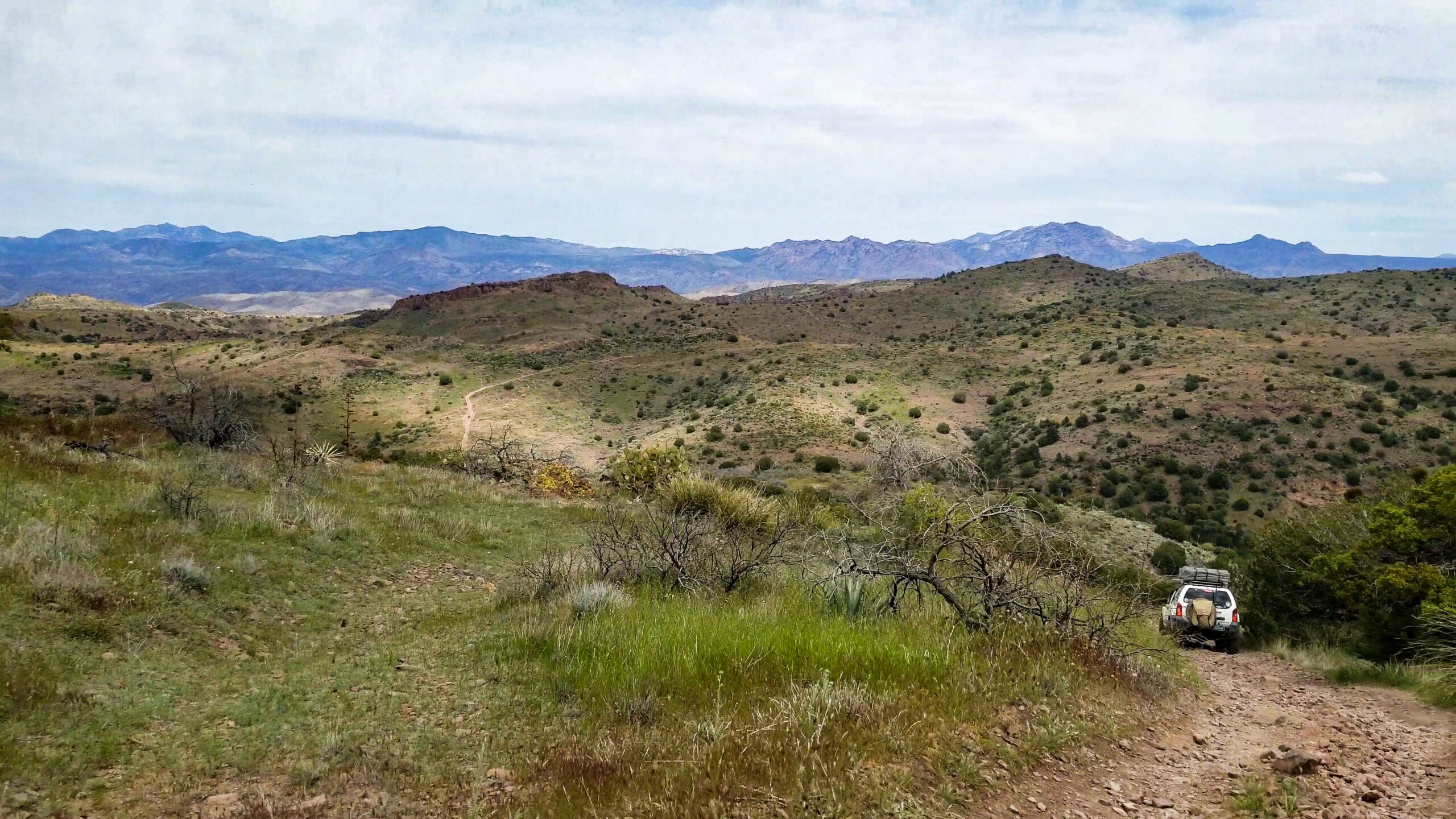Your cart is currently empty!
Posted in
First published by RANGE magazine in the Winter 2014 issue
THE REAL WOLF
© JOE MCDONALD / TOM STACK & ASSOCIATES
The Real Wolf
By Ted B. Lyon & Will N. Graves, with selected clips and introduction by Earl Stahl, Ph.D.
Ted Lyon and Will Graves, along with their contributing authors, have made an important contribution to the literature on wolves by basing their book, “The Real Wolf;” on the facts, science, and economics of today’s wolf. The following excerpts provide information and insights that are seldom found in other sources.
Several interviews he had with ranchers:
In an interview I conducted with Montana rancher Justin O’Hair, he advised me that on one occasion he spotted a young Black Angus calf with its entrails hanging out and a wolf 100 yards away. Initially, the USFWS [U.S. Fish & Wildlife Service] officer would not confirm that the calf had been attacked by a wolf because, he said, Justin was “not qualified” to confirm the difference between a wolf and a coyote. Justin and his family own the 80,000-acre O’Hair Ranch located outside of Livingston, Mont., where they run 1,100 head of cattle. Justin has lived on the ranch his entire life, and his family homesteaded the ranch in 1878. They are in the pastures, checking cattle on horseback almost every day. To say that they do not know the difference between a wolf and coyote is beyond stupid.
Justin also related that often cattlemen or ranchers will find just an ear tag lying on the ground at a wolf kill site, but without the corpse, they cannot tell what killed it. Cattle that suffer attacks from wolves almost always die since no amount of antibiotics can overcome the infection that comes with a wolf bite. And wolves often just maim their victims and move on without eating anything.
In chapter six, Dr. Valerius Geist, one of the world’s leading experts on wolves, describes the effects in Canada of wolf habituation:
I saw the neighbor’s cattle, spooked by a wolf, crash through fences while fleeing for the security of their barn. I found two of the three cattle killed and eaten by wolves; the third was severely injured about the genitals, udder, and haunches and had to be put down. I saw the docked tails, slit ears, and wounded hocks on the dairy cows. Our neighbor’s hired man saw from a barn a wolf attacking a heifer with a newborn calf. He raced out and put the calf on his quad. As he raced to the barn, the wolf ran alongside, lunging at the calf, right into the barn! A predator control officer was called, and 13 wolves were removed within a mile of our house.
The “tameness,” “hanging around,” and increasing boldness and inquisitiveness are the wolf’s way of exploring its potential prey and assessing the strength of its potential enemies. These incidents with the two “misbehaving” packs moved me to look for other situations where patterns of habituation might be found. I did not have to look far. Two wolves in June 2000 severely injured a camper on Virgas Island just off the coast of Vancouver Island. These wolves became tame before the attack—they nipped at the clothing of campers, licked their exposed skin, and ate wieners from their hands. Our observations suggested that wolves, attracted to habitations by the scarcity of prey, shift to dogs and livestock, but also increasingly, though cautiously, explore humans, before mounting a first, clumsy attack.
Heather Smith-Thomas, in chapter nine, writes about Idaho ranchers” experiences with wolves:
Jay Smith, on a ranch near Carmen, Idaho, did some research of his own, looking at ranchers’ BLM reports for several years. He checked as far back as these records go to assess range losses on the Diamond-Moose allotment. “I documented how much loss ranchers experienced before wolf introduction, compared with losses after the wolves came. Very soon after wolves were brought in, John Aldous and some of the other ranchers on that allotment had huge losses. “Aldous lost 14 calves in one small area near Leesburg the first year. “Then the wolves scattered out and hit other ranchers besides me. They had dens on the border between our range and Edwards. Our elk population dropped from 300 in Moose Creek Meadows 15 years ago to where now you’re lucky to see 20 elk. The USFWS eliminated the Gerano wolf pack three times, and they just kept coming back. I think some of the offspring that go off on their own come back and regroup.”
Fay and Eron Coiner have a grazing ranch high in the mountains above Salmon, Idaho, and spend summers there with their cattle. Fay says they had more than 100 elk on their ranch, but by the third summer of wolves, they were down to 13 elk. “Now we are lucky to see any elk. But we lose at least one calf a year to wolves, even with Eron riding out there every day to try to chase them off. He watched one of our calves being killed, and that was gruesome. Eron was given a permit to kill any wolves that were with our cattle, and he’s shot a few, but they still come back.
“Cattle that survive a wolf attack or calves crippled by stampeding cows can’t be sold for top dollar with the rest of the group at sale time. The rancher has to butcher them or sell them at a loss. Ranchers are not compensated for the costs of doctoring injured animals or for cows that must be sold because they lost a year of production due to loss of their calves, which eats into the sustainability of the cowherd and makes it necessary to raise or buy more replacement heifers. Ranchers are also not compensated for lower weights on market calves.”
Rancher Ralph McCrea said:
“In the winter, wolves have been coming in to kill at night, and my calves have lost weight. I have to corral them every night so they’re close enough that I can get to them when the wolves come in. By spring the cattle don’t want to go back into the corral at night, but I don’t dare leave them a mile and a half away from the house with no chance to protect them. When you get up at night to check the cows, it’s horrible that part of your calving equipment has to be a rifle on your back. I was within 25 yards of one wolf, right in the corral with the cows, with just a flashlight.”
Now, he takes a gun with him. McCrea says he realizes that we can never completely control wolves to keep them from killing livestock, but he points out that it would help if ranchers could get full compensation for missing animals. “If the public insists we have wolves, they should pay the price and help us resolve the problems wolves have created.”
Many ranchers feel that wolf introduction—together with the impositions it has caused—is a taking of private property by the federal government. In a later chapter, Jess Carey reports the results of research he conducted on five New Mexico ranches. On two of those five ranches, he writes:
Ranch A is a cow/calf operation. Records of average annual pre-wolf introduction losses were 16%. The herd consisted of 300 head. Head makeup: 20 bulls, 25 replacement heifers (not expected to calve), 0 steers, and 255 production cows. 255 production cow numbers X 16% average pre-wolf annual calf losses = a 41 head loss. 255 — 41 = 214 fall calf crop number, representing an 84% calf crop. Losses pre-wolf were attributed to calving, open range cows, coyote predation, and winter weather. In 2008, the San Mateo Pack denned in calf core areas on Ranch A.
Pre-wolf annual losses: $24,600
2008 losses: $71,400
2009 losses: $60,000
Defenders of Wildlife compensation paid:
$600
Rancher sold off remaining herd and went out of business.
Ranch B is a cow/calf operation that adjoins Ranch A. Records of average annual pre-wolf introduction calf losses were 2.5% for three years running with an average annual loss of 4 to 6 head per annum. The herd consisted of 256 head. Herd makeup: 18 bulls, 30 replacement heifers (not expected to calve), 5 steers, and 203 production cows. Average calf crop = 97.5%. In 2008, the San Mateo Pack denned near calf core areas on Ranch B.
Pre-wolf losses: 5 head/year = $3,300
2008 losses: 27 head, $16,200
2009 losses: 58 head, $34,800
Total losses 2008 and 2009: $51,000
Defenders of Wildlife compensation:
$1,500
In one of the last chapters of the book, Lyon presents a political solution to the wolf problem, and states:
The biggest culprit that I found in my research was not the human beings trying to implement government policy because it was their job, but the law they were charged to implement.
These excerpts give the reader a sense of the accurate and factual contents of the book. A more definitive source about wolves in North America can’t be found.
Earl Stahl lives in Neenah, Wisc. “The Real Wolf” will be available in January 2014.
Order through Amazon.com and other online retailers, or email Kmoore@tedlyon.com (and include name, address and phone number please).
WINTER 2014 * RANGE MAGAZINE « 47
TOM & THERISA STACK / TOM STACK & ASSOCIATES
See The Real Wolf as it appears in RANGE magazine by clicking here
Subscribe to RANGE magazine
Call 1-800-RANGE-4-U
The post The Real Wolf appeared first on RANGEfire!.
Tags:
You may also like…

Visit the AZBackroads.com Store

Please Become A Member
We need your help to keep our backroads open. Please join today!








